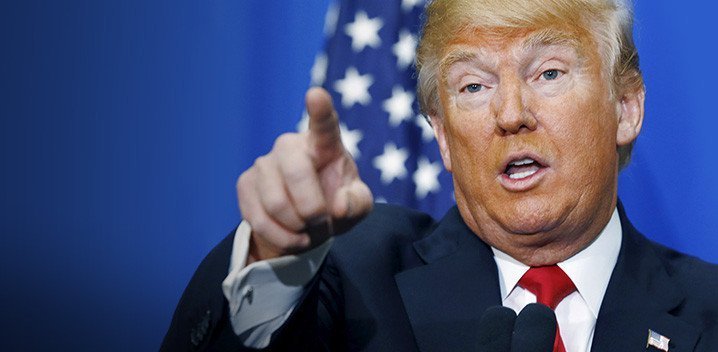The US elections are over and the outcome is an uncontestable victory for Donald Trump and the Republican Party. Trump got 50.4% of the national vote, a margin of more than 2 percentage points over Kamala Harris. This signals a decisive victory by recent US election standards. He won all seven swing states and got about the same number of votes in 2024 as in 2020 (Harris got 10 million fewer than Joe Biden had that year).
- ACME Solar share price shoots up over 17% in two trading sessions; find out why
- Monthly Trading Plan for XAUUSD (Gold)
- Gold Price Recovers Further to Nearly $2,636 on the Fresh Escalation in the war Between Russia and Ukraine
- Gold Defends Key $2,547 Support; What’s Next?
- Gold Investors Await Fed’s Response and US Inflation Report
Before we hold our breath again in anticipation of the antics to come from the Trump administration, let us try to look for some explanation of the outcome. There are two sets of possible explanations. The first set, which dominates the media, can be grouped together as ‘short term’ or ‘only this election.’
These are the most direct and obvious explanations that treat this—and every election—as a unique case with its own dynamics. In this line of thinking, changing candidates or messaging or timing could have yielded a different outcome. These include:
It’s Biden’s fault: He blocked the Democratic primary process by insisting on running for president although he was mentally and physically unfit, which increased disdain for him and resulted in a candidate, Harris, who was not vetted by party members and had little time to prepare.
It’s Harris’s fault: She ran a poor campaign, her message was muddled and advertising insipid; her only arguments were ‘I am pro-abortion’ and ‘I’m not Trump,’ she never acknowledged the struggles of the working class, and was seen as weak.
Trump is a charismatic and transformational figure: He ran a focused campaign with a clear message; he understands the post-truth world better than anyone else; he has the ability to manipulate people’s fears and anxieties; and he projects strength in an uncertain world.
It’s the economy, stupid: The inevitable post-covid global inflation hurt people of limited means and Democrats lost credibility as capable managers of the economy.
There is much merit in each of these explanations. There must be, else they wouldn’t be the first to rise to the top. In fact, it’s not hard to imagine that if the candidates had been different, or their campaigns, so would have been the outcome. After all, the margin of victory was only 2% of the popular vote. The outcome may look decisive, but statistically, it really isn’t.
Can we, without discounting ‘short term’ analyses, look for deeper patterns? Are there structural forces at play that suggest something more about democracies and elections today, things we can think of as ‘long term’ or even ‘global’ trends because they could be applied to other countries and political systems? I note three possibilities.
The first of these builds on the widely-held idea that Trump was seen as strong and Harris weak. This fits into a global narrative about the rise of the ‘strongman’ politician in not only traditionally autocratic regimes like Russia, China and many African countries, but also democracies like Poland, Hungary, Turkey, Venezuela and others.
The idea here is that only ‘strongmen’ can protect majoritarian interests in domestic settings and national interests in a hostile world arena. Women are seen as too soft to take harsh actions. It is possible that this ideology is particularly prevalent in the US because of a deeply embedded patriarchy.
Certainly, neither woman (Clinton or Harris) at the top of a party ticket won, but Clinton did get more votes than Trump and only lost because of a strange electoral college system. And the ‘strongman’ in Italy is a woman (Giorgia Meloni). Perhaps gender is not the determinative factor for perceptions of strength.
The second approach comes from the tactics and rhetoric of successful campaigns in which the road to victory is paved with the ‘demonization’ of minorities. Trump’s target minority was what it has always been: immigrants, especially undocumented people from Latin America said to be violating laws, with a special mention of pet-gobbling Haitians.
He is not alone. Up and down Europe, we see right-wing politicians rising on the updraft of hostility to Muslim immigrants, especially after the Syrian conflict. Hard right anti-immigrant parties are in power in six EU countries (Italy, Finland, Slovakia, Hungary, Croatia and the Czech Republic) and on the verge of it in what used to be liberal havens like Sweden, the Netherlands and France. Anti-immigrant/foreigner/minority posturing could be a permanent feature of politics going forward.
Finally, we ought to consider if what we are seeing in Western democracies is a rising ‘anti-globalization’ sentiment. Globalization is a disruptive force. It has made many technologies, places and people redundant. Many of these people are in more developed countries of the world, living in hopeless deindustrialized or rural places.
At the same time, income and wealth inequalities have risen to unprecedented levels, led by the emergence of a new elite ‘creative class.’ Resistance to this disruption and inequality is inevitable. This is the politics of survival and recognition, of class animus and retribution. The liberal elite on one side and the “deplorables” (Clinton’s term) on the other look at each other with incomprehension and contempt.
This is why Brexit won and Marie Le Pen went from an extreme fringe to the centre of French politics. The realignment of working classes from the left to the right of the political spectrum is likely to reverberate for decades in democracies.
